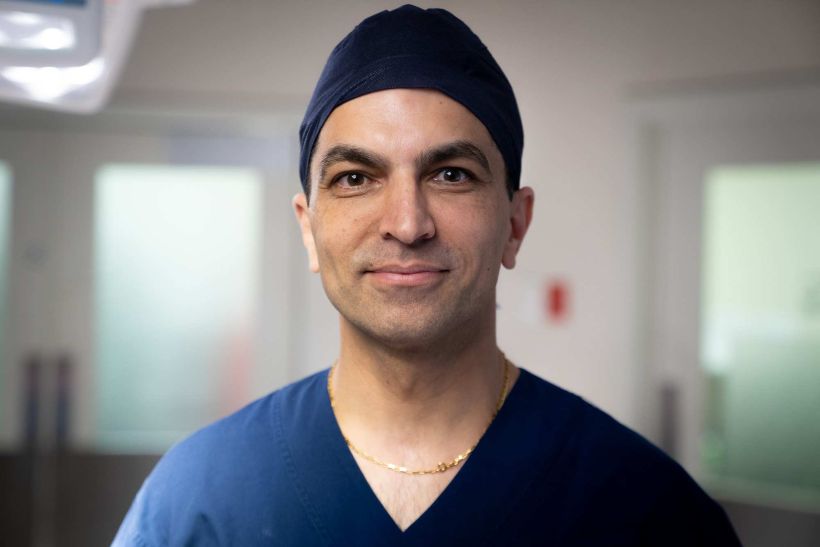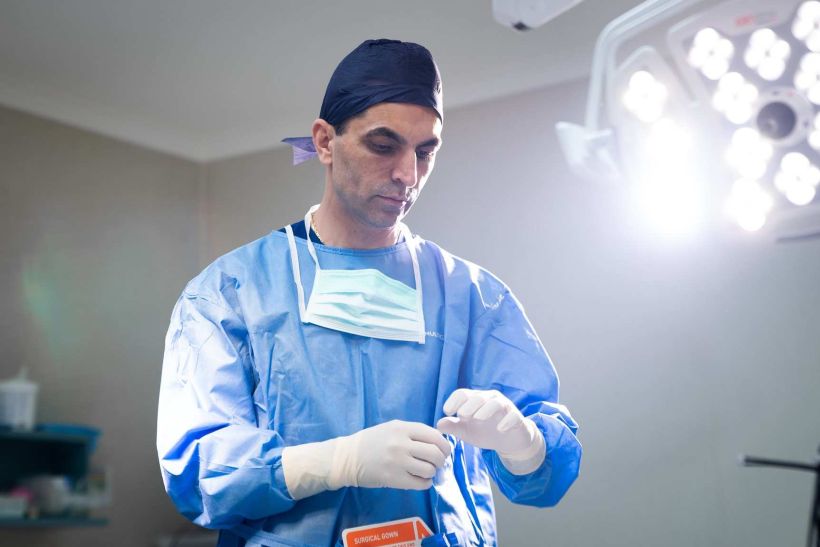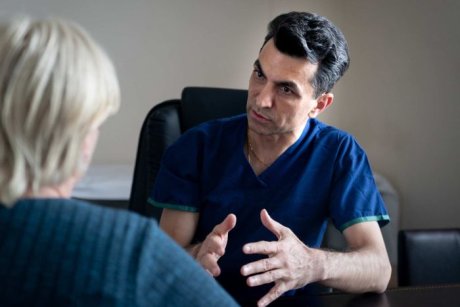It wasn’t until she was in her early 20s that Jools realised there was something not quite right about her clitoris.
“It looked like it had been cut,” Jools says.
“I didn’t really have the information as to why it looked that way.”
It wasn’t until her adoptive mother — a “conservative Christian fundamentalist” — “muttered” some comments under her breath that Jools realised she’d been subjected to female genital mutilation (FGM).
“It’s a part of your body … to know you are so mutilated … how are you supposed to relax and not think about that?
“And the fact that you can hardly feel anything … if it is stimulated in the wrong way it hurts and then there’s the fact it doesn’t look good.”
“It haunted me,” Jools says.
And so began a decades-long quest to heal herself.
Last year, Jools, now 50, became the first woman in Australia to undergo restorative clitoris surgery.
Jools’ life-changing surgery
In 2004, French urologist Pierres Foldes developed a procedure that could restore sensation by removing scar tissue and resurfacing the clitoris.
It aims to reduce chronic pain, return sensitivity and even facilitate orgasms.
Dr Foldes’ research found that of those surveyed one-year post-operation, 98 per cent reported an improvement, or at least no worsening, in pain, 97 per cent experienced clitoral pleasure and 51 per cent experienced orgasms.
Yet detractors say the surgery is ineffectual. And 15 years on, only a handful of surgeons practise it worldwide.
Paula Ferrari, founder of No FGM Australia, says this is because society does not prioritise female sexuality.
“Women have constantly been told we are not meant to have sexual pleasure … if it’s taken away it is definitely not considered a priority to address in terms of a health concern.”
An Australian Institute of Health and Welfare report estimated that 53,000 girls and women born elsewhere, but now living in Australia, have undergone FGM or cutting. However, this report excluded women from many countries where FGM is practiced, including Indonesia.
No FGM Australia estimates the number of girls born in Australia who are at high risk of FGM has more than tripled to 3,876 per year.
‘The most terrifying walk of my life’
In 2015, Melbourne-based plastic surgeon Mansoor Mirkazemi chanced upon an FGM survivor’s lecture.
“That’s the first time I started thinking about FGM,” Dr Mirkazemi says.
“I thought, if this is the injury they have received, plastic surgeons should be in a good position to repair.”
But there was no-one to train him in Australia.
Still, he persisted, learning about the surgery through online consultations with Dr Foldes and American gynaecologist Marci Bowers.
In 2018, he operated pro bono on Jools, making her the first woman in Australia to undergo restoration.
Jools says the thought of having to be cut to fix being cut was terrifying.
“The 25-minute walk to the hospital that morning was probably the most terrifying walk of my life.
“I have lived with this for so long and it has impacted my personal relationships for such a large part of my life.
“There was the fear of the unknown; what’s the result of this going to be, what’s this going to look like, what’s it going to feel like?”
But she said what helped was Dr Mirkazemi’s manner.
“When I was on the table … the anaesthetist was putting in the anaesthetic … and then I looked back towards Mansoor, and he was holding my hand and rubbing my shoulder,” Jools says.
“And it was the sweetest gesture that he could have made. It was so beautiful that this man cared so much, that he knew how hard it was.”

Dr Mirkazemi, who came to Australia as a refugee, said it was his own experiences that made him want to reach out to FGM survivors.
“I understand what it feels like when you have nowhere to go, you are stuck, and there is uncertainty,” he says.
Growing up a Bahai in Iran, Dr Mirkazemi witnessed his family being imprisoned and denied opportunities.
When he was 15, his mother entrusted him to his aunt who was attempting to escape the fundamentalist state. They fled to Pakistan, where Dr Mirkazemi dreamt of a life in Australia.
“I think I do sympathise with people who have been wronged and need help,” he says.
“But at the end of the day, I am a doctor, it is my duty to help … that’s why I have been trying so hard to get some training.”
Spreading the treatment
Earlier this month, Dr Mirkazemi and fellow Australian doctor Miranda Hann went to Kenya to train and operate with an international team, including Dr Bowers.
“The number of patients I saw and the variety of pathologies I treated has given me a significant amount of experience,” he says.
“I can train a few surgeons in Australia quite easily; the surgery is not difficult to master.”

Now, Dr Mirkazemi, along with another plastic surgeon in the Kenya team, wants to go a step further and reconstruct lost anatomy.
He says Dr Foldes’ main objective was to remove scar tissue and resurface the clitoris, but many of the women had their labia, clitoris and clitoral hood cut.
“You can bring the clitoris out … it has sensation, but it just doesn’t look quite right,” he says.
“Long term, we will be looking at ways of reconstructing the labia and the hood as well so that it resembles normal anatomy.”
‘I am free’
A year after her surgery, Jools says she feels more confident and has a better self-image.
“I would think, ‘what’s the point of getting into shape and looking good when it still looks horrible down there?’,” she says.
“Now … I don’t have those feelings of self-loathing.”
She is also ready to date again after a gap of 10 years.
“I’d think about going on a date and I’d think, ‘at what point do I tell them that I am mutilated, because I can’t hide it’.”
“Now, it’s gone. I am free, I am free.”

